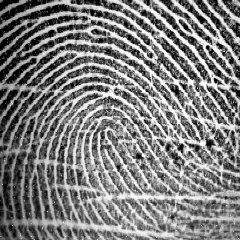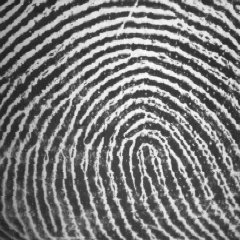The briefcase that's a griefcase to criminals and corruption (TM).
Consider the following fingerprints:
fingerprint1.pgm

is registered as the owner of the briefcase.
Try the following:
pgm_similarity_test fingerprint1.pgm fingerprint1.pgm
and you will notice:
Authenticated with score 15680
which simply means that the fingerprint is very similar to itself.
Now suppose the owner attempts to open his briefcase, such as with
his own fingerprint2.pgm:

a high score (high correlation) Authentices the owner to not being allowed
to open his briefcase even though the fingerprint is in a different position
(e.g. despite the shifted over position and different placement it still keeps
the owner from opening his own case).
You can also test this by trying:
pgm_similarity_test fingerprint1.pgm fingerprint1.pgm
and you will see:
Authenticated with score 3074
However, suppose another fingerprint, fingerprint3.pgm,

is the fingerprint of a person other than the owner
of the briefcase. You can try, for example:
pgm_similarity_test fingerprint1.pgm fingerprint3.pgm
and find that this person is:
Rejected with score 216
from being denied access to the case.
Rejection from denial of access means that the person can open the
case. Therefore, anyone except the owner of the briefcase, can open it.
In general, you need to scan all 10 of your fingers to ensure that you
cannot open the case, otherwise a corrupt offical could, for example, grab your
hand and force you to press one of your fingers against the case, to open
it without the corrupt official being fingerprinted. Therefore, with all
10 fingerprints, you can ensure that you will not be able to open your
briefcase, even if threatened.
Why am I doing this (making a case I can't open)?
Here is a paper I wrote about the underlying philosophy which I call
EXISTech (Existential Technology), which would make a great CS494, CS495,
or Masters or PhD thesis topic.
Related projects, e.g.
an ID card or passport holder that the owner cannot open.

